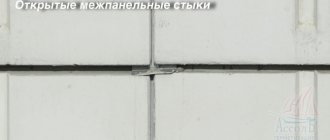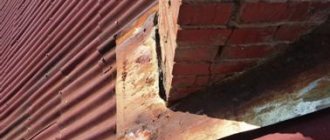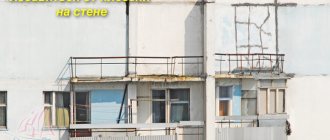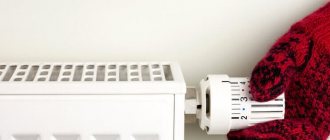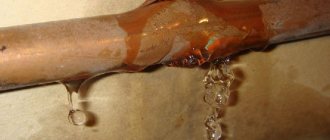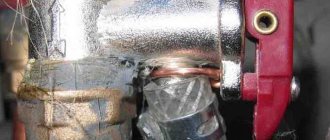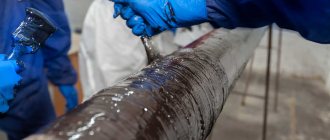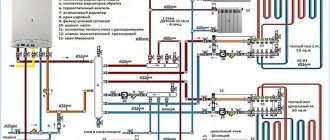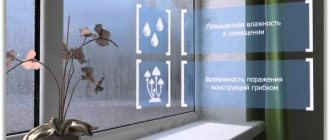Why does the house become cold and damp?
A building constructed according to the construction type from prefabricated parts (plates) that are produced in factories is called a panel building. The construction of such houses is happening at a rapid pace. It is necessary to deliver ready-made reinforced concrete slabs-panels to the construction site, and assemble them in the right place according to the Lego principle - and the structure is ready. This usually takes no more than a year.
Reinforced concrete (RC) panels are a multilayer structure. On the outside there is a facing layer, then reinforced concrete, polystyrene foam-mineral wool insulation, and the last layer is reinforced concrete again. The layers are held together by a reinforcement cage.
When connecting panels together, builders seal the seams. But it is not always performed efficiently and meets the standards. Therefore, the joints may freeze and begin to leak. This is the weak link of the building, which is susceptible to the appearance of fungus.
Already 3-5 years after the commissioning of an apartment building (MCD), shrinkage occurs - individual parts of the building move. This is influenced by various factors, including temperature changes. Sealants in interpanel seams are subject to tension and compression, as well as exposure to sunlight, icing, and precipitation. The result of this is the opening of the joint, which can reach 4-5 millimeters.
As a result of the destruction of interpanel seams in apartments, not only dampness and mold appear, but also heat and sound insulation deteriorates, drafts and leaks appear, the walls become damp from condensation accumulating on them, and turn black. If no measures are taken for a long time, water will enter the interpanel joints and cause corrosion of internal metal structures. At the same time, the walls are slowly but surely being destroyed, and this process is aggravated every year in the autumn-winter period.
Correct sealing
When building a house, following repair and construction technologies, the interpanel joints are initially sealed.
Stages of events:
- Self-expanding foam is blown into the joint.
- Installation insulation is laid (most often - “vilatherm”, characterized by low thermal conductivity and waterproofing properties, as well as the presence of a layer of air).
- Mastic (sealant) is applied.
After 5-6 years, there is a need for re-sealing, since the interpanel seams are destroyed under the influence of external influences. A new one is applied on top of the existing mastic layer. This does not require large financial costs and allows you to solve the problem for a while.
Sealing of interpanel seams is carried out every 5-6 years
More thorough secondary sealing is carried out by opening the seams. They are completely cleaned of old materials, the surfaces are cleaned of accumulated dirt deposits to ensure a good fit of the mastic. Then sealing is carried out in compliance with technology.
To ensure high-quality tightness, a number of conditions must be met:
- Use only modern building materials.
- Treat mold areas with antiseptic agents.
- Carry out activities in dry weather.
- Adhere to the necessary rules and technologies.
Technology for using façade sealant
Regardless of which façade sealant was chosen for sealing the seams, the technology for its application will have similar features. The sealing process is carried out in several stages:
- Preparing the surface for applying sealant. It is necessary to thoroughly clean the joints from accumulated dirt, old paint and cladding;
- Removing old sealing material, insulation, and mortar from the interpanel seam;
- Sequential seam breaking, crack filling. This procedure can be performed either manually or using special equipment;
- Moistening the surface or applying a primer layer. The processing method depends on the properties of the chosen sealing material, for example, acrylic sealants are applied to a dry surface;
- Application of sealant in compliance with technological requirements. The material must fill the entire space without leaving voids;
- A layer of plaster is applied on top of the sealant, protecting against mechanical damage and smoothing out the influence of atmospheric factors;
- Finish sealing the seam with mastic.
During work, it is necessary to take into account the air temperature and the level of atmospheric humidity, since the reliability of the adhesion of the sealant and the base depends on this.
Selecting a sealant
Properly selected material will provide a high guarantee of high-quality repair of interpanel joints. Professionals prefer polyurethane-based sealants, which are characterized by increased stability and reliability.
The second most popular material is silane. It is used in harsh climatic conditions that polyurethane cannot withstand (it can crack due to temperature changes).
Temperature fluctuations have a much worse effect on silicone sealants, while acrylic sealants have the lowest price and quality. They are more used for sealing fixed joints.
Mixtures of rubber-bitumen materials, resin, polyisobutylene, asbestos, and rosin have proven themselves to be effective. It is necessary that the sealant contains an antiseptic.
In addition, there are other materials - polyurethane foam and sealing tape.
The composition is chosen taking into account the degree of destruction of the interpanel seams in the MKD and the volume of work. Minor cracks are degreased and a layer of silicone-based moisture-proof mastic is applied. More significant defects are eliminated using polyurethane, after first filling the voids with insulation and compacting the resulting layer.
If the wear of the seam is catastrophic, it is opened, the previous insulation and debris are removed, and the resulting space is filled with polyurethane foam. After drying, cut off the excess with a knife.
Technology and methods for repairing joints
The main requirement for carrying out high-quality repair work is precisely the correctly selected and high-quality materials, as well as the precise implementation of the entire production technology.
There are 3 main repair methods
- Caulking the seams.
- "warm seam"
- Waterproofing works.
If we are talking about caulking joints, then such work is performed without opening and replacing the main sealant. In this case, mastic is applied on top. This repair method is used when there are no visual signs of a leak inside the apartment, and the damage to the seam and its top layer is in itself insignificant. Such work is usually carried out immediately during cosmetic repairs.
But waterproofing joints involves complete cleaning and replacement of the sealing material. But despite all this, insulation of the joints is not carried out. As a rule, they use a one-component polyurethane sealant for interpanel seams and joints, called Germaflex 127. This material is excellent for insulating a vertical seam, and also withstands temperature changes over a fairly wide range (from -50 degrees to +80), and also hardens quickly .
It comes in white or gray, and goes well with any type of facade paint. The warranty period is a full 8 years. Repairing interpanel seams in panel houses using this technology makes it possible to protect them from moisture, but still this will not protect against the cold that will enter the room through horizontal unsealed joints.
Sealing the outer seam means that this will only protect against moisture and water getting inside, but we are not talking about cold here. For this purpose, waterproofing compounds are used, and the seam between the panels is completely filled using polyurethane foam, which creates an insulating effect.
Please note that in this way the foam will be located between the slab, which means it will be protected from ultraviolet rays. This will extend the service life. If you used a sealant, it will protect the slabs and joints from water getting into them. Sealed joints are a guarantee that you will not have fungus and mold in the room.
Warm seam
The “warm seam” technology for repairing seams in panel houses is quite new, but more effective than those given above. To carry out such work, it will be necessary to partially or completely open the interpanel seam. Old sealant and insulation material are removed, and the joints are cleaned of various debris. When this work is completed, Vilaterm hollow insulation is placed in the joints.
If possible, the cavities are filled with polyurethane foam in order to insulate the seam as best as possible. The joint should be sealed using mastic with a sealing effect or simply sealant.
But with this technology, you will not have the entire joint cavity filled. To solve this issue with filling, taking into account all the shortcomings of many methods, a special technology was developed, which is called a “tight seam”.
This technology is an improved version of the warm seam. It provides for sealing seams in panel houses using polyurethane foam and Vilaterm insulation, and the space behind it.
The horizontal grooves of the house are also sealed using the same method. When this stage of work is completed, the joints are sealed using sealant or mastic. So, if the joints in neighboring apartments were not sealed, then cold air will still not be able to get to you through the uninsulated seams.
Attention! Such work must be carried out at an air temperature of at least -16 degrees. There is no regulation regarding the upper temperature limit.
The grooves can be insulated without opening them. This is required when the groove is too narrow or the outside is sealed with a strong mortar. Then you will have to drill holes along the height of the joint, the step of which will be 0.2-0.3 meters. Polyurethane foam should be poured through the holes made, and work should be carried out from the bottom up.
Please note that the joint can be considered sealed if foam comes out of the hole. Excess material should be removed. In this case, thermal insulation is not laid, since its role is played by polyurethane foam. Apply mastic over the cement coating. To prevent the walls from getting wet, the joint must be sealed in the same way.
Only if you follow all the technological nuances will you receive a high-quality seal when repairing seams in a panel house. If something is done wrong, then the work was done in vain. Above the second floor, such work is trusted only to industrial climbers.
We insulate the joints of the apartment
It is possible to carry out sealing even from the side of the apartment. Typically, such work is carried out when renovating an apartment when there is no furniture in it. Before starting work, you should decide on the volume. To do this, everything is opened and checked for the presence of insulation material. If the builders installed it and it is in good condition, then for insulation you can only use polyurethane foam, and to foam between the panels you can not open the groove all the way, but drill holes along it. All work should be carried out from floor to ceiling. The lower and upper joints should be insulated along the entire length, and not just where the slabs are connected.
When there is no insulation inside the joints, they will have to be opened completely and cleaned of accumulated dirt. Before you start laying Vilaterm, you should lay a mounting tape or construction interlining, on which you should apply a small layer of foam.
Now, while the foam has not yet hardened, insulation should be placed on it and pressed with a wooden spatula. Carry out this operation carefully so that you do not accidentally damage the material. Next, we fill the rest with foam so that it does not come out when it hardens. The joint should be sealed with cement mortar and then filled with putty. In this case, the use of sealing mastic is not necessary.
What to do if joints break?
It happens that interpanel joints have just begun to undergo deformation. If there is no significant displacement of the seams, the damage is minor, external cosmetic repairs can be made.
Some people mistakenly believe that by insulating the apartment from the inside, they will solve the problem. However, according to experts, it is impossible to ideally seal a home from the inside, even with high quality repairs. The main work must be done from the street. But at the same time, it would not be superfluous to insulate the apartment from the inside. That is, the seams must be sealed on both sides, and to do this, you should join forces with your neighbors in order to seal the entire area of the apartment building, and not just its individual parts.
To identify any existing damage, the seams between the panels are carefully examined. Repairs can be made with partial opening of the joint joint. To do this, the cement (or other solution) that does not seal the joints tightly is removed in those places where it does not fit tightly enough. If difficulties arise, use a hammer drill, which drills holes every 2-2.5 centimeters. Polyurethane foam is poured into them using a gun until it comes out. After the material has hardened, its protruding part is removed, the joints are treated with a primer, and the opened and drilled holes are plastered. The joints in the seams are filled with mastic.
If it is impossible to use machinery and lifting equipment to work at height, industrial climbers are hired.
Cosmetic repairs to a building are carried out without opening the connections. This is the cheapest way to deal with the problem, but it can only be used if the external slabs are perfectly connected.
Before carrying out work, the presence of defects is examined. Remove old mastic from wall joints. If the cement mortar is laid with high quality, there are no cracks or chips, you can start finishing the seams.
The joint is cleaned and treated with a primer solution with a deep-penetrating effect. If necessary, seal the joint with cement mortar and apply water-repellent mastic, which is mixed with a mixer. Sealing is carried out in such a way that the seam is slightly larger than the joint. The seams can be taped with masking tape to achieve an aesthetic effect. The final step will be its removal after completion of the work.
Urgent measures
With the onset of the cold season, it is sometimes discovered that air penetrates through the joints. It is impossible to take drastic measures. There may be damp weather outside, during which work on sealing joints cannot be carried out. Therefore, as a temporary measure, experts recommend sealing them from the inside. This is wrong, but in this situation the only possible way out.
When insulating a wall internally, the dew point shifts from the middle of the panel to the inner wall surface, as a result of which water streams will appear between the insulation and the interior finishing. Moisture flowing onto the floor will cause destruction of the floor covering.
As soon as it becomes possible to externally seal the joints, it is necessary to begin work immediately.
Results
I am glad that recently more and more residents have begun to realize that with high-quality work on sealing and insulating seams, they will receive comfortable housing without mold and mildew.
Panel houses began to be built in the 20th century. Now almost all multi-storey buildings consist of this building material. Some residents of panel houses often observe freezing of walls in winter, fading of wallpaper, deterioration of sound insulation, and disturbances in the indoor microclimate. All these signs indicate unsealed seams between the panels. It is possible that the builders did not seal them properly during construction, and over time, cracks appeared in their place. Therefore, sealing seams in panel houses has become an important problem.
